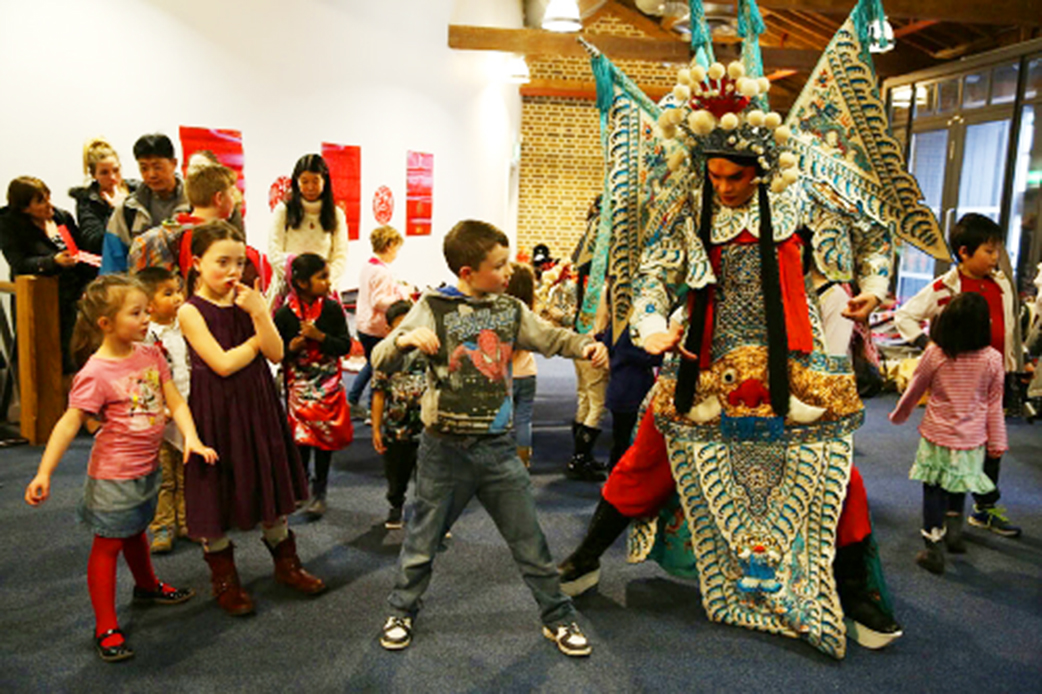Sichuan opera winning more foreign fans

Children learn steps and gestures from a Sichuan Opera performer at the Museum of London Docklands in London, Feb 13, 2016.
In recent years, many classical Sichuan Opera performances like Feng Yi Ting and Li Yaxian have been performed in Western countries. They have been well received in the Netherlands, Hungary, Germany, the United States, and other countries.
Though performed in another language, these performances received a positive reception abroad, which fully demonstrates the charm of Sichuan Opera, said Shen Tiemei, director of the Chongqing Municipal Sichuan Opera Theater known as the Queen of Sichuan Opera in China.
An artistic tradition with 300 years of history, Sichuan Opera is popular in China’s southwestern areas. During the late Ming and early Qing dynasties, people from around the country migrated into Sichuan. Many independent troupes of different opera genres from Jiangsu, Jiangxi, Shaanxi and other provinces came here and combined with the local Sichuan dialect to develop Sichuan Opera. The opera combines five different singing styles, namely, gao qiang, hu qin, deng diao, tan xi and kun qu.
In 2004, Shen performed renowned Sichuan Opera composer Guo Wenjing’s chamber opera Feng Yi Ting in Amsterdam. An attempt to combine traditional gao qiang with a Western symphony, the opera was well received by the overseas audience.
Some members of the audience even went backstage and asked the main actor Shen to teach the singing style of the opera, said Yuan Wenge, director of the museum at the Chongqing Municipal Sichuan Opera Theater.
After that, more and more invitations came to Sichuan Opera artists to invite them to perform in overseas locations, like Italy, France, Belgium, Hungary, the United States, and Canada.
Whether it was the combination with the symphony, or utilization of modern lighting techniques, traditional Sichuan Opera gained vitality in the modern world through innovation and integration, and this has helped Western people understand it.
Many people know the famous dramatic arts of face-changing and fire spitting. However, “Sichuan Opera is more than these eye-catching techniques,” Shen said. “Sichuan Opera is a comprehensive art form involving singing, speaking, acting and acrobatic fighting. Only an all-dimensional demonstration can enable Western audiences to understand and develop an interest in Chinese culture, especially traditional Chinese culture.”
As more and more Sichuan Opera plays are performed abroad, many foreign fans want closer contact with opera. Some of them are enthralled by one major character in an opera performance and try to learn how to perform as the character, and some have even come to China to learn the opera.
“Great art forms can transcend borders and nations. I hope more and more people pay attention to Sichuan Opera and develop it so that this 300-year-old intangible cultural heritage can be passed down,” Shen said.
